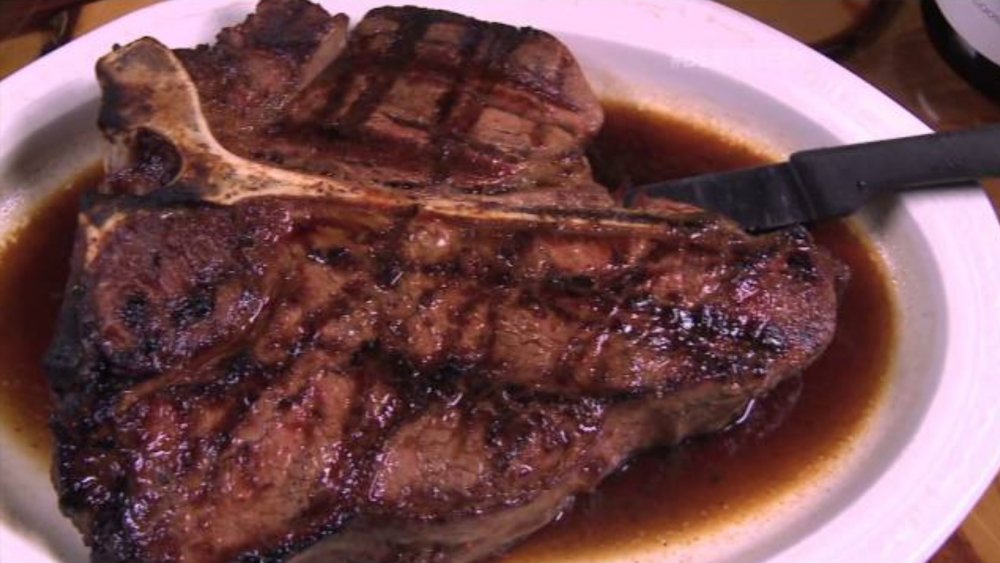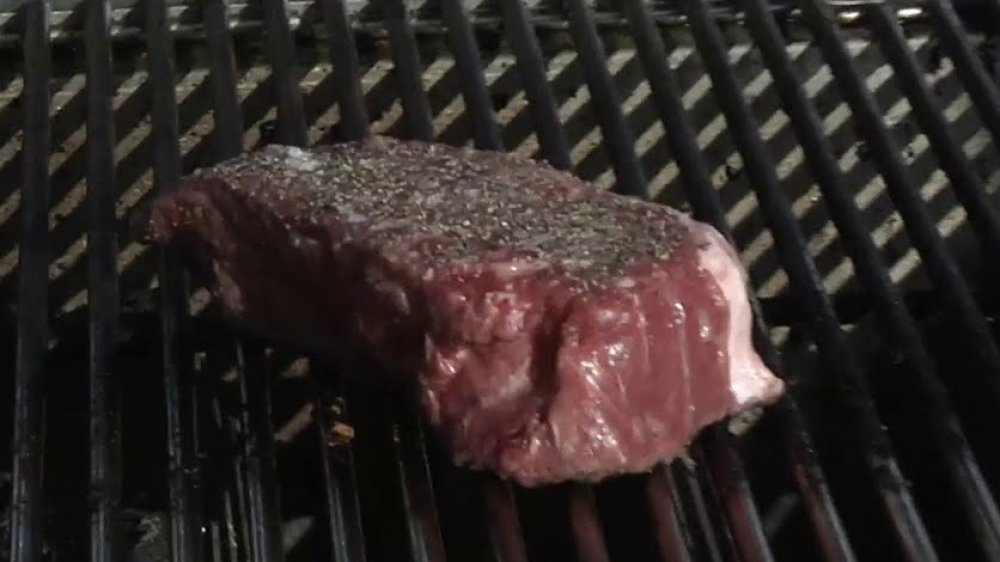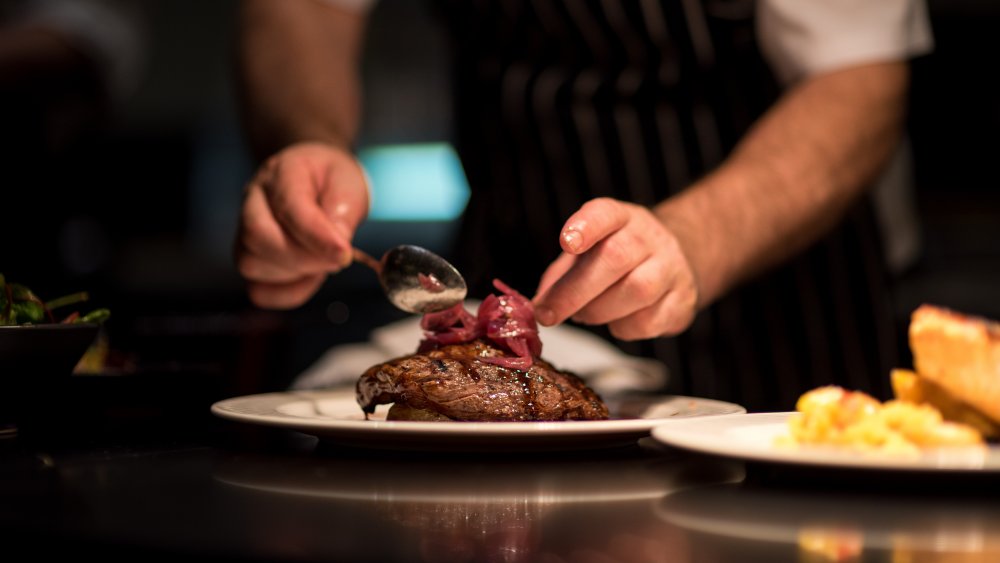How Much Your Expensive Steakhouse Meal Actually Costs The Restaurant
Depending on where you go for your bovine needs, ordering steak can feel more like a high-stakes game of roulette. That seems triply true if you go for one of the extravagant slabs sold at Las Vegas restaurants. When The Daily Meal ranked America's 15 priciest steakhouses in 2016, Sin City accounted for seven of them. Las Vegas's succinctly named Cut took the top spot. Guaranteed to trim the fat off of guests' wallets, the Wolfgang Puck-owned establishment cost an average of $117 per person.
But you don't need a casino in your city for it to seem like the steakhouse is sinning against you. No matter where you go, the steakhouse is playing with house money while you make the unsure bet that your expensive meal can put its money where your mouth is.
What all goes into the cost of your steakhouse meal
As of this writing, Fast Food Menu Prices estimates that a 9-ounce Victoria's Filet Mignon from Outback Steakhouse will set you back about 28 bucks. At Ruth's Chris, a Tomahawk Ribeye — listed as one of the restaurant's specialty cuts — costs roughly $119. If you're not a beef-ologist or whatever type of person would appraise the quality of your meal, you might wonder whether your steak tips are even worth the tip you'll pay the server. How much does it cost a steakhouse to make your meal?
When your dinner for two seems to cost enough to feed two dozen people, it may seem like the steakhouse blatantly scammed you. Did you pay through the roof for faux-let mignon? Obviously, restaurants can lie like the rest of us, but the soaring price tag attached to your steakhouse meal might very well be on the up and up. In 2015, St. Louis Magazine dining editor George Mahe drew from his extensive experience owning and operating restaurants to explain that "by far, the biggest restaurant expenditures come from the cost of food and labor."
Why you probably shouldn't have a cow over steakhouse prices
In the best-case scenario, food would account for a quarter to a little over a third of expenses. But people put a premium on steak. In 2010, Tim Niver, owner of the naughtily named steakhouse, The Strip Club Meats and Fish, told CBS Minnesota that the food made up roughly 30 percent of expenses. Mahe said 38 percent was a realistic figure for the cost, one which he picked to demonstrate how a steakhouse could find itself in dire straits if it sold beef on the cheap.
Based on Mahe's example, a $30 steak would only net the restaurant $11.40. Once you factor other expenses like rent, wages, and taxes, it's easy to see how steak could eat into a restaurant's profits without a beefy markup. Fortunately, cheaper menu items keep the price from running wilder than a bull set loose in Pamplona.


